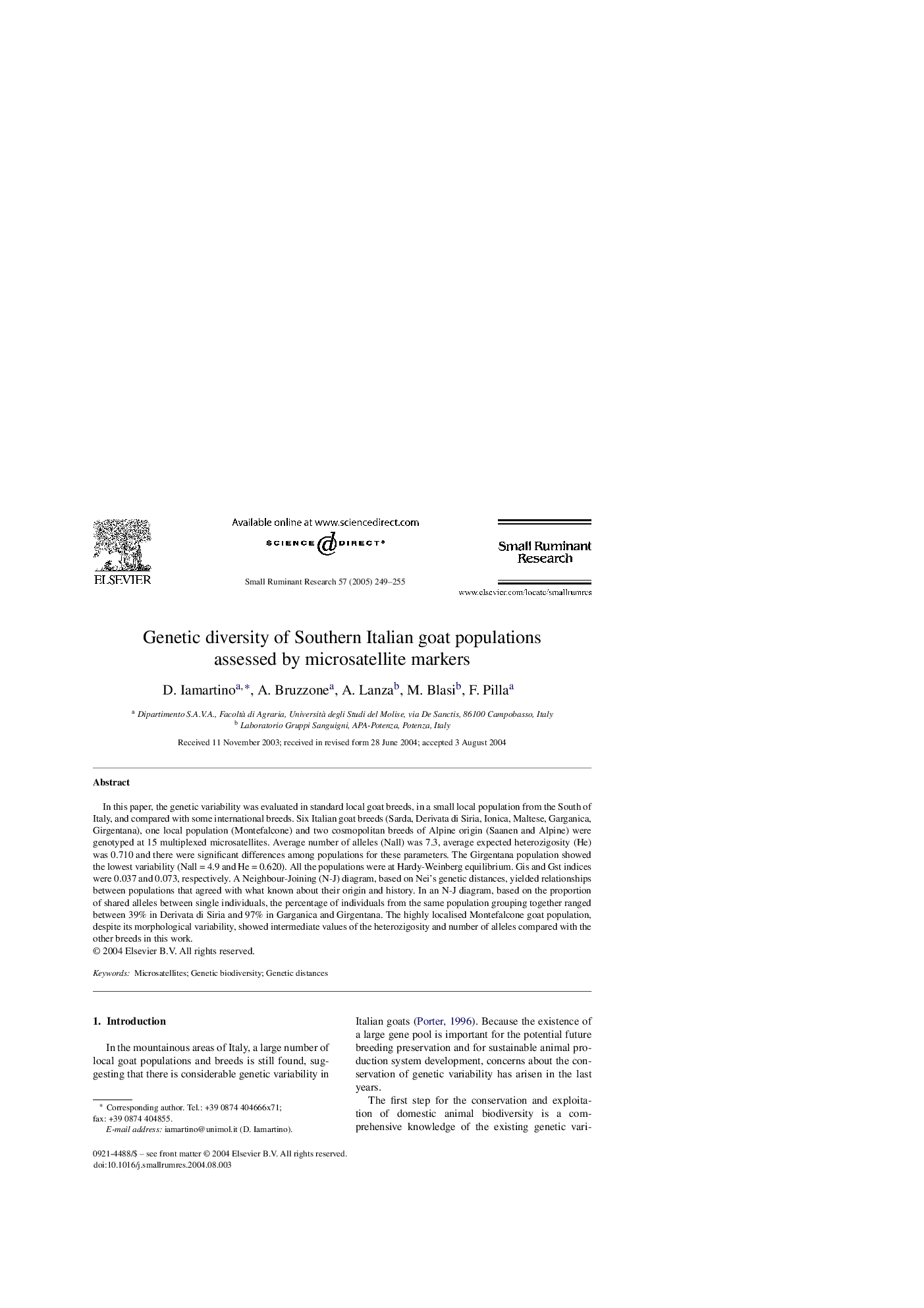| Article ID | Journal | Published Year | Pages | File Type |
|---|---|---|---|---|
| 8986795 | Small Ruminant Research | 2005 | 7 Pages |
Abstract
In this paper, the genetic variability was evaluated in standard local goat breeds, in a small local population from the South of Italy, and compared with some international breeds. Six Italian goat breeds (Sarda, Derivata di Siria, Ionica, Maltese, Garganica, Girgentana), one local population (Montefalcone) and two cosmopolitan breeds of Alpine origin (Saanen and Alpine) were genotyped at 15 multiplexed microsatellites. Average number of alleles (Nall) was 7.3, average expected heterozigosity (He) was 0.710 and there were significant differences among populations for these parameters. The Girgentana population showed the lowest variability (Nall = 4.9 and He = 0.620). All the populations were at Hardy-Weinberg equilibrium. Gis and Gst indices were 0.037 and 0.073, respectively. A Neighbour-Joining (N-J) diagram, based on Nei's genetic distances, yielded relationships between populations that agreed with what known about their origin and history. In an N-J diagram, based on the proportion of shared alleles between single individuals, the percentage of individuals from the same population grouping together ranged between 39% in Derivata di Siria and 97% in Garganica and Girgentana. The highly localised Montefalcone goat population, despite its morphological variability, showed intermediate values of the heterozigosity and number of alleles compared with the other breeds in this work.
Keywords
Related Topics
Life Sciences
Agricultural and Biological Sciences
Animal Science and Zoology
Authors
D. Iamartino, A. Bruzzone, A. Lanza, M. Blasi, F. Pilla,
